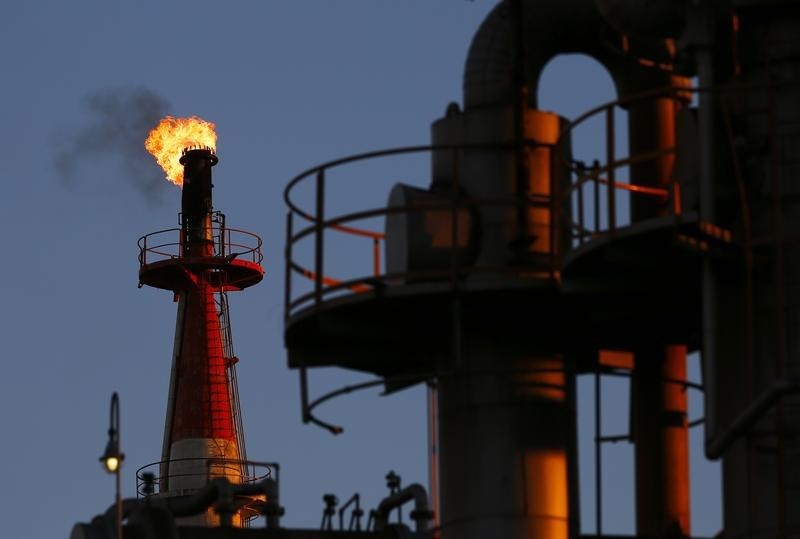U.S. stocks lower as investors rotate out of tech ahead of Jackson Hole
* U.S. to keep tariffs on Chinese goods until Phase 2
deal-Mnuchin
* Signing of U.S.-China phase 1 deal expected at 1630 GMT
* U.S. output to rise in 2020 more than previously expected
* Coming up: EIA inventory data at 1530 GMT
By Jessica Jaganathan
SINGAPORE, Jan 15 (Reuters) - Oil prices slipped on
Wednesday on concerns that the pending Phase 1 trade deal
between the United States and China, the world's biggest crude
users, may not lead to more fuel demand as the U.S. intends to
keep tariffs on Chinese goods in place.
U.S. Treasury Secretary Steven Mnuchin said late on Tuesday
that the tariffs would remain even as a trade deal is set to be
signed on Wednesday. That could temper China's oil demand growth
by limiting its access to its second-largest trading partner.
Chinese demand has been the main driver of global fuel
consumption growth.
Concerns about increasing supply also pressured prices after
a government report on Tuesday said that output from the U.S.,
currently the world's largest producer, will increase in 2020 by
more than previously forecast. Additionally an industry report
late on Tuesday said U.S. crude inventories increased last week.
Brent crude LCOc1 was down 21 cents, or 0.3%, at $64.28
per barrel by 0206 GMT. U.S. West Texas Intermediate crude
futures CLc1 were down 23 cents, or 0.4%, at $58.00 a barrel.
"Investors are incredibly concerned about the well
documented non-OPEC supplies coming to market in 2020, and those
worries came to the fore as oil prices headed lower after a
bearish to consensus inventory build was reported," Stephen
Innes, chief Asia market strategist at AxiTrader said in a note.
U.S. President Donald Trump is slated to sign the Phase 1
agreement with Chinese Vice Premier Liu He at the White House on
Wednesday. That agreement is expected to include provisions for
China to buy up to $50 billion more in U.S. energy supplies.
However, the Treasury Secretary Mnuchin said in a television
interview that the U.S. will keep the tariffs until the
completion of a second phase of the agreement.
U.S. crude inventories rose by 1.1 million barrels, data
from the American Petroleum Institute showed, countering
expectations for a draw. Gasoline and distillate inventories
also climbed.
U.S. oil production is expected to rise to a record of 13.30
million barrels per day in 2020 mainly driven by higher output
in the Permian region of Texas and New Mexico, the U.S. Energy
Information Administration (EIA) said.
